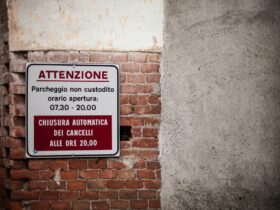“축농증”은 영어로 “Sinusitis”로 번역됩니다. 이는 신체 내부의 공간에 고름이 고이는 질환으로, 주로 코곁굴(부비동)의 점막 염증을 의미합니다.
“축농증”을 영어로 표현하는 방법
- Sinusitis (축농증)
- Sinus infection (부비동 감염)
- Rhinosinusitis (비부비동염)
1. Sinusitis
“Sinusitis”는 부비동의 염증 상태를 의미합니다.
- Sinusitis can cause symptoms like headaches, facial pain, and nasal congestion. (축농증은 두통, 안면 통증, 코 막힘 등의 증상을 유발할 수 있습니다.)
- It often occurs following a viral infection, like the common cold, but can also result from allergies or bacterial infections. (주로 감기와 같은 바이러스 감염 후 발생하지만, 알레르기나 세균 감염에 의해서도 발생할 수 있습니다.)
- In severe cases, foul-smelling nasal discharge may occur, indicating an infection. (심한 경우 악취가 나는 비강 분비물이 나타날 수 있으며, 이는 감염을 나타냅니다.)
2. Sinus infection
“Sinus infection”은 부비동의 감염을 나타냅니다.
- A sinus infection can lead to thick yellow or green mucus, fever, and pressure around the eyes and forehead. (부비동 감염은 점액이 두껍고 노란색 또는 초록색으로 변하며, 발열과 눈 주위 및 이마의 압박감을 유발할 수 있습니다.)
- Treatment typically involves decongestants, pain relievers, and sometimes antibiotics if a bacterial infection is suspected. (치료는 일반적으로 비충혈 완화제, 진통제, 그리고 세균 감염이 의심될 경우 항생제를 포함합니다.)
- Chronic sinus infections may require further medical evaluation and possibly surgical intervention. (만성 부비동 감염은 추가적인 의료 평가와 때때로 외과적 개입이 필요할 수 있습니다.)
3. Rhinosinusitis
“Rhinosinusitis”는 비강과 부비동의 염증을 포함하는 용어입니다.
- Rhinosinusitis encompasses inflammation of both the nasal passages and the sinuses, often due to allergies or infections. (비부비동염은 비강과 부비동 모두의 염증을 포함하며, 종종 알레르기나 감염으로 인해 발생합니다.)
- Symptoms can vary from mild to severe and may include persistent cough, bad breath, and fatigue. (증상은 경미한 것부터 심각한 것까지 다양하며, 지속적인 기침, 악취, 피로감 등이 포함될 수 있습니다.)
- Management strategies may include nasal irrigation, antihistamines, and corticosteroids to reduce inflammation. (관리 전략으로는 비강 세척, 항히스타민제, 코르티코스테로이드가 염증을 줄이기 위해 사용될 수 있습니다.)
“축농증”은 영어로 “Sinusitis”로 표현되며, 고름이 괴는 상태와 관련된 다양한 증상 및 치료 방법을 포함합니다.













Leave a Reply